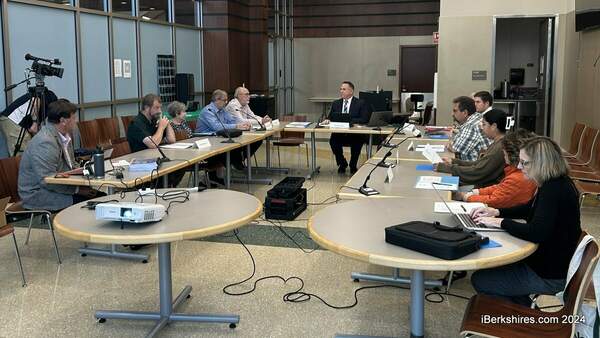Berkshire BPW Names Scholarship Recipients
PITTSFIELD, Mass. — Berkshire Business & Professional Women (BBPW) announced the recipients of its 2020 scholarships at its October meeting.
BBPW awarded 22 local women scholarships, totaling $21,000, to help them attain their higher education goals.
"I never, ever thought I could go back to school, as a single mom with three kids," Billie Jo George, an oncology nurse at Berkshire Medical Center and one of this year's recipients said.
The women hail from seven different communities, including Adams, Dalton, Great Barrington and Pittsfield. Some are going to college for the first time, others are returning after time off, while still others are furthering their careers by adding a Master's degree to their credentials. Many are combining jobs and parenting with college, including a number of single mothers.
"We are thrilled to be supporting so many impressive local women as they pursue their college dreams," Kalee Carmel, who takes over as BBPW President this month from Celia Clancy, said.
BBPW Scholarship Committee Chair June Roy-Martin noted that both the number of recipients and the total amount awarded this year have increased substantially over last year, despite the pandemic. This year, awardees also included recipients who were unemployed due to COVID-19..
Scholarships are funded primarily through the annual gala that celebrates the BBPW's Woman of Achievement Award. This year's Woman of Achievement is Andrea Harrington, the county's first woman District Attorney, but the pandemic forced the postponement of the gala in May, casting uncertainty over the scholarship program. Instead, Harrington's achievement was feted with a hybrid event in September that achieved its $28,000 fundraising goal.
Following are this year's scholarship awardees, along with their college and course of study:
-
Stella Asamoah, Berkshire Community College, Pre-Nursing
-
Cassandra Bercier, Maria College of Albany, Nursing
-
Monica Bliss, Berkshire Community College, Theater/Music
-
Emily Boino, Berkshire Community College, Nursing
-
Brooke Bridges, UMass Amherst, Developmental Psychology/Behavioral Neuroscience
-
Toni Buckley, Technical University of Kaiserslautern, Germany, Management of Nonprofits and Cultural Organizations
-
Billie Jo George, Elms College, Bachelor's Degree in Nursing
-
Holly Hunter, Elms College, Early Childhood Education
-
Viviane Komenda-Scherer, Berkshire Community College, Associate's Degree in Nursing
-
Michelle Levesque, Berkshire Community College, Health Care Management
-
Rhodalyn MacQuaye, BayPath University, Nursing
-
Lindsay McCarthy, Berkshire Community College, Mechanical Engineering
-
Sonya Purvis, Embry-Riddle Aeronautical University. Master's Degree in Human Factors
-
Stephanie Quetti, Westfield State University, Master's Degree in Social Work
-
Karen Ruiz Leon, UMass Amherst, Master's Degree in Social Justice Education
-
Cansas Scutt, Berkshire Community College, Social Work
-
Alicia Starsja, Elms College, Social Work
-
Chelsea Taylor, Berkshire Community College, Education
-
Heather Thompson, Westfield State University, Vocational Education
-
Jessica Twing, Elms College, Social Work
-
Soncere Williams, Elms College, Social Work
-
Jacqueline Ziemek, MCLA, K-12 Administration
















